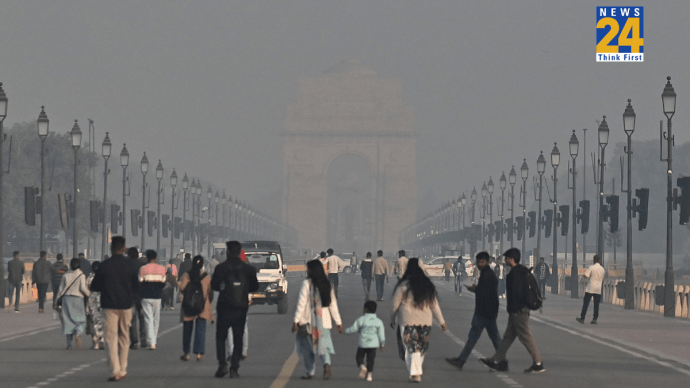India is set to witness a grand celebration in just three days. The Maha Kumbh, starting on January 13, will be a significant boost for Uttar Pradesh, the host state of this monumental event. The festival will also benefit the entire country, with an estimated 40 crore people, both domestic and international, expected to converge on the banks of the Ganga in Prayagraj. This year’s Maha Kumbh is projected to contribute over 1% to both nominal and real GDP, making it a major economic catalyst.
How much will UP Benefit?
Uttar Pradesh Chief Minister Yogi Adityanath projected that the Kumbh would generate Rs 2 lakh crore in trade if each of 40 crore visitors spends an average of Rs 5,000. If we consider the varied spending patterns of domestic and international visitors, the average expenditure could rise to Rs 10,000 per person. Based on this estimate, the total economic impact could reach Rs 4.5 lakh crore.
Even with a 10% adjustment for estimation risks, the Kumbh’s contribution of Rs 4 lakh crore to the economy remains extraordinary. According to The Times Of India Report, The expenditure represents additional, unplanned spending expected to occur between Jan and Feb in the back drop of Maha Kumbh. It is poised to increase GDP figures by over 1% on both nominal and real scales, strengthening not only quarterly growth numbers but also annual national GDP. Various reports suggest that the Yogi Adityanath government treasury is likely to earn almost 9% of its GDP.
What UP Will Spend For Maha Kumbh 2025
Under the leadership of Chief Minister Yogi Adityanath, the BJP government has initiated 549 projects, ranging from infrastructure development to sanitation, for the Maha Kumbh, with a budget of Rs 6,990 crore. In 2019 Kumbh Mela, only 700 projects costing over Rs 3,700 crore were initiated. UP Officials expect the event to generate Rs 25,000 crore in revenue and have an overall economic impact of Rs 2 lakh crore on the state’s economy.
The Kumbh Mela is not just a spiritual event; it’s also a major economic powerhouse. From luxury tents with nightly rates soaring to ₹1 lakh to high-stakes corporate sponsorships, the festival generates significant revenue. Small traders in the vibrant puja markets invest their savings with hopes of seeing a tenfold return, while boatmen along the Ganga depend on the event to sustain their livelihoods. The Kumbh Mela seamlessly blends commerce with faith, creating opportunities for many.
India’s cultural and religious festivals such as local haats, melas, and the Kumbh Mela continuously rejuvenate economic activities. Historically, mobile fairs and markets have been pivotal in driving India’s economic growth by integrating commerce, spirituality, and social interactions.
The Times Of India report also says that, According to CM’s advisor Awanish Awasthi, the govt’s investment in Maha Kumbh Mela, estimated at Rs 16,000 crore. This investment is expected to yield manifold returns. GST collection alone on the Rs 4 lakh crore expenditure could amount to Rs 50,000 crore. Including income tax and other indirect taxes, the govt’s total revenue could exceed Rs 1 lakh crore. This highlights an impressive return on investment, underscoring the Maha Kumbh’s role as a powerful catalyst for economic revival.
Divine And Digital Kumbh Mela
Police has set up special check posts to check vehicles coming from outside. Intelligence agencies have been specially alerted in the ‘mela’ area. According to the police, Suspicious activities and suspicious persons are being closely monitored.
UP CM Adityanath inaugurated the Digital Maha Kumbh Experience Centre and said it displays the divinity and grandeur of the religious gathering digitally. The Digital Experience Centre will use virtual reality (VR), augmented reality technologies, holograms and LED displays to digitally showcase stories of the Maha Kumbh, Samudra Manthan, Prayag Mahatam and Triveni Sangam. The Digital Experience Centre is spread over 60,000 square feet at Sector 3 of the Kumbh Mela area and is divided into 12 zones.Digital tourist maps, security systems linked to artificial intelligence (AI) and a system for assessing the cleanliness of toilets through smartphones have been arranged for the convenience of pilgrims.













